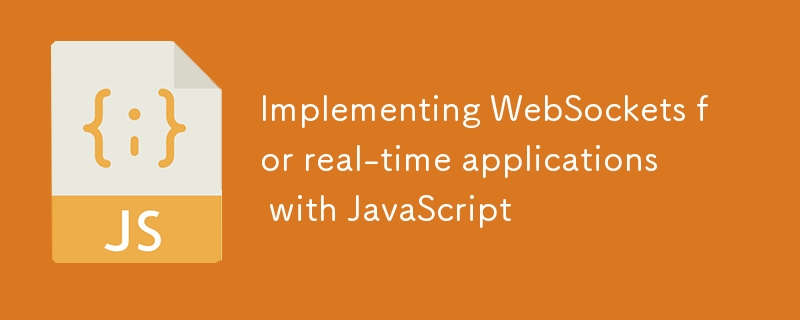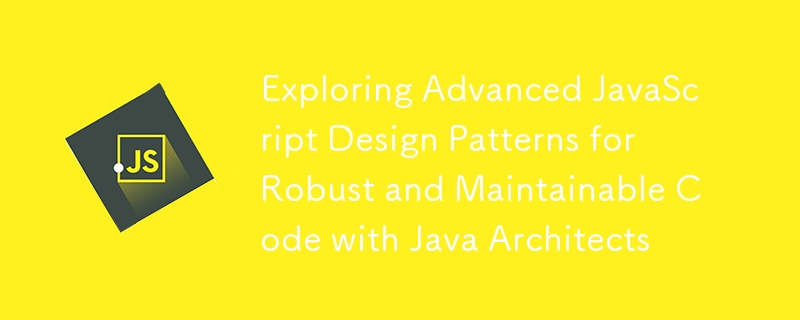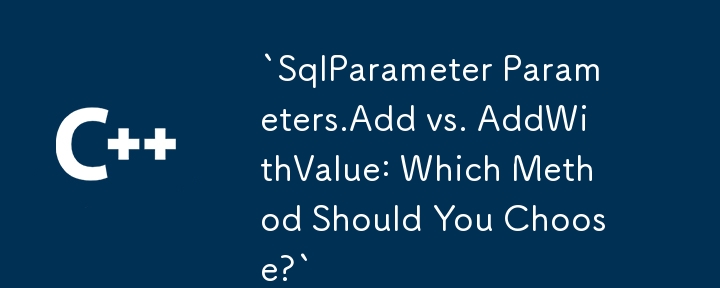Found a total of 10000 related content

Frontend Internationalization Libraries
Article Introduction:Front-end internationalization should select the appropriate library according to the framework. react-i18next is suitable for React projects, supports hooks, lazy loading and formatting; VueI18n is suitable for Vue projects, officially recommended, and has strong compatibility; svelte-i18n is suitable for Svelte, lightweight and supports SSR; other such as LinguiJS and FormatJS are suitable for multi-framework or multi-team collaboration scenarios.
2025-07-18
comment 0
698

Laravel and the Full Stack: Front and Back Together
Article Introduction:Laravel realizes full-stack development through the Blade template engine, EloquentORM, Artisan tools and LaravelMix: 1. Blade simplifies front-end development; 2. Eloquent simplifies database operations; 3. Artisan improves development efficiency; 4. LaravelMix manages front-end resources.
2025-04-18
comment 0
1081

Frontend Internationalization (i18n) Best Practices
Article Introduction:Four steps are required to achieve the internationalization of the front-end: First, use structured JSON to centrally manage the translation content to avoid hard coding; second, use mature i18n libraries such as react-i18next, vue-i18n or formatjs to support complex language rules; third, design in advance to adapt to different language lengths and RTL layouts, reserve space and use elastic layouts; fourth, add translation annotations to clarify the context, facilitate collaboration. These four points can reduce maintenance costs and improve multilingual adaptation accuracy and development efficiency.
2025-07-26
comment 0
768

How to handle multiple file uploads?
Article Introduction:When handling multi-file uploads, you need to pay attention to front-end selection and preview, back-end reception and processing, and avoid common problems. 1. The front-end realizes multiple selections, uses FileReader to generate temporary URL preview pictures and release memory in time; the file list should be saved to the status in the framework. 2. The backend such as Node.js can use mult middleware to receive file arrays, and PHP and Python obtain file lists through $_FILES and getlist and process them one by one. 3. Notes include: renaming to avoid file name conflicts, front-end and back-end jointly limit file size, support failed retransmission of individual files, limit concurrency optimization performance, and verify file types to prevent security risks.
2025-06-25
comment 0
843

Implementing Micro Frontends with Java Backend
Article Introduction:The micro front-end architecture realizes multi-team collaboration and flexible deployment by splitting the front-end applications into multiple independent modules. The core combination methods include using WebComponents or iframes to embed sub-applications, dynamic loading using routing mapping, and coordinated communication through container applications; the Java back-end serves as API provider and service governance support, and uses RESTfulAPI to divide independent path space, unified authentication mechanism, introduces the gateway layer to process request routing, and configures CORS policies; in terms of deployment, it can be integrated through static resource hosting, decoupling dependencies in the construction stage, and Docker containerization; it is recommended to use local proxy, enable hot updates, simulate micro front-end environments and unified log formats during development and debugging.
2025-07-20
comment 0
651

Yii Developer: Most recquired skills in Europe
Article Introduction:The key skills that European Yii developers need to possess include: 1. Yii framework proficiency, 2. PHP proficiency, 3. Database management, 4. Front-end skills, 5. RESTful API development, 6. Version control system, 7. Testing and debugging, 8. Security knowledge, 9. Agile methodology, 10. Soft skills, 11. Localization and internationalization, 12. Continuous learning, these skills make developers stand out in the European market.
2025-05-11
comment 0
489

Building Multi-Language Frontend Applications
Article Introduction:To efficiently build multilingual front-end applications, it is necessary to use international libraries, standardize translation management, optimize switching experience, and strengthen testing and verification. 1. Use i18n libraries such as react-i18n and vue-i18n to realize functions such as translation, language switching, interpolation, etc.; 2. Organize translation files according to modules, unify naming rules and cooperate with collaboration tools to reduce maintenance costs; 3. Consider the impact of language on layout and RTL to avoid page refresh and maintain state; 4. Verify translation integrity through automated tools to ensure that the UI display in multiple languages is normal, thereby improving maintainability and user experience.
2025-07-18
comment 0
736

How to use PHP to implement real-time notification system PHP message push and subscription
Article Introduction:To implement a real-time notification system, the core is to establish a long connection between the server and the client. 1. Use the WebSocket protocol to realize two-way real-time communication, PHP can be implemented through Ratchet and other libraries; 2. The front-end uses JavaScript to establish connections and process messages; 3. Optional message queues such as RedisPub/Sub decoupling high concurrency pressure; 4. Passing tokens through URL parameters to achieve user identity authentication; 5. Optimizing performance can be achieved through Swoole, message compression, connection pooling and other means; 6. The front-end realizes the disconnection mechanism, and uses an exponential backoff algorithm to control the reconnect frequency.
2025-07-25
comment 0
290

HTML5 history API for single page applications
Article Introduction:HTML5HistoryAPI is an interface for operating browser history. It implements SPA refresh-free routing through pushState, replaceState and popstate. Its core functions include: 1.history.pushState() adds a new history, suitable for page switching; 2.history.replaceState() replaces the current record, suitable for updating the URL without adding new history; 3.window.onpopstate listens to the browser's forward and back events. Front-end routing realizes navigation by intercepting link clicks, calling pushState to update the URL, loading content based on the path and listening to popstate
2025-07-06
comment 0
475

What are Server-Sent Events (SSE)?
Article Introduction:Server-SentEvents (SSE) is a technology that servers push real-time updates to browsers in one-way. It realizes event streaming through persistent HTTP connections, which is suitable for news push, real-time notification and other scenarios. The client uses the EventSource object to listen to messages, and the server sends data in text/event-stream format. Each message contains data (required), event (optional), id (optional), and retry (optional) fields. The front-end can listen for custom events through the addEventListener, and the back-end needs to keep the connection open and output data streams that match the format. SSE does not support IE and legacy Edge, but in modern browsers
2025-06-23
comment 0
783

Qwik: The Resumable Framework for Instant-Loading Web Apps
Article Introduction:Qwik realizes instantaneous loading through "recoverability": 1. Serialize application status and event listener location when the server renders HTML; 2. The browser directly restores the state rather than performs JS hydration; 3. Load component code as needed during interaction. This brings the advantages of zero-latency response, extremely small JS load and lazy loading, which is suitable for scenarios with large differences in content, SEO sensitivity and performance, but it requires the cost of a small ecosystem and a change in development thinking. It is a new front-end paradigm of "interaction without execution".
2025-07-26
comment 0
787

Building Real-Time Applications with HTML5 WebSockets
Article Introduction:WebSocket is a full-duplex communication protocol provided by HTML5, which allows the browser to establish a persistent connection between the server and realizes efficient real-time data transmission. Its core advantage is that it does not require repeated connection establishment, reduces latency and improves efficiency. When building real-time functions, the front-end creates WebSocket instances through JavaScript and listens to events, and the back-end can use languages ??such as Node.js, Python or Java to process connections and message broadcasts. Common application scenarios include chat applications, online collaborative editing, real-time data display and notification systems. During development, you need to pay attention to cross-domain issues, connection maintenance mechanism, compatibility, back-end concurrent pressure and security details, and combine Redis or Nginx to improve performance and expansion if necessary.
2025-07-04
comment 0
236

Implementing H5 Biometric Authentication (WebAuthn)
Article Introduction:WebAuthn is a key technology for H5 biometric authentication. It realizes fingerprint, facial recognition and other verification methods through browsers. At its core, it uses a public key encryption mechanism for authentication without a username and password. The access process is divided into two steps: registration and login: the front-end calls navigator.credentials.create() and navigator.credentials.get() respectively, and cooperates with the back-end to complete credential generation and verification. There are four key points to be noted: 1. Browser compatibility; 2. Must run in an HTTPS environment; 3. Users need to actively interact and trigger; 4. Correctly configure CORS and RPID. In actual applications, mobile support issues need to be dealt with and bootstrap for the first time
2025-07-23
comment 0
570

H5 Web Sockets for Bidirectional Real-time Data
Article Introduction:H5WebSockets is a full-duplex communication protocol provided by HTML5, which allows the browser to establish a persistent connection with the server and realizes low-latency bidirectional data transmission. 1. It continuously interacts through a single TCP connection, avoiding the high latency and waste of resources caused by traditional HTTP polling; 2. It is suitable for online chat, real-time market, collaborative editing, game synchronization and other scenarios that require instant push; 3. When using it, the front-end creates connections and listens to events such as onopen, onmessage, onclose and onerror, and the back-end can use Node.js or Python to build services; 4. Notes include priority use of encryption protocols wss:// and processing network
2025-07-29
comment 0
155

Implementing WebSockets for real-time applications with JavaScript
Article Introduction:WebSocket is a network protocol that implements full duplex communication between browsers and servers. Compared with traditional polling methods, it has lower latency, less bandwidth consumption and stronger real-time performance. Its core advantages include: 1. Reduce latency: no need to establish frequent connections; 2. Reduce bandwidth usage: avoid duplicate HTTP header information; 3. Strong real-time: The server can actively push messages. The front-end realizes communication by creating WebSocket instances and listening to open, message, error, and close events; the back-end such as Node.js can use the WS library to build services. Pay attention to when using: 1. Handle connection failure and downgrade scheme; 2. Add automatic reconnection mechanism; 3. Use wss encryption to ensure security; 4. Unify message grid
2025-07-13
comment 0
438

Frontend Accessibility Audits and Remediation
Article Introduction:Front-end accessibility audits and repairs are the basic work to ensure that the website is available to all users, especially in the context of increasingly stringent legal requirements, which must be taken seriously. First, use automation tools such as Lighthouse, axe or WAVE to quickly locate common problems; second, check key points such as picture alt attributes, link descriptive text, form label associations, color contrast, etc.; then repair the HTML semantic structure, replace the interactive elements simulated by div/span with native tags, and use ARIA attributes reasonably; then ensure that the keyboard navigation is complete, the focus order is reasonable, and dynamic content realizes the focus trap; finally emphasize that early intervention can reduce the repair cost.
2025-07-18
comment 0
489

Exploring Advanced JavaScript Design Patterns for Robust and Maintainable Code with Java Architects
Article Introduction:For large-scale application development, especially in an environment where Java architects participate, mastering advanced JavaScript design patterns is crucial, which can improve the scalability, testability and maintenance of the code. 1. The module mode creates private scope through IIFE, encapsulates functions, avoids global namespace pollution, and is suitable for scenarios that do not rely on ES6 modules; 2. The observer mode realizes decoupling between components, which is suitable for event-driven systems, which is convenient for testing and communication; 3. The policy mode allows runtime switching algorithms, promotes opening and closing principles, and is suitable for scenarios that require flexible configuration such as tax calculations, payment processing, etc. These patterns provide clear structure for the code, which facilitates front-end collaboration.
2025-07-16
comment 0
401

Building Cross-Platform Desktops with Python Electron/PyQt
Article Introduction:The combination of Python and Electron or PyQt needs to be selected according to technical background and project requirements. If you are familiar with web development and need to call Python backend logic, you can consider the Electron Python subprocess, start Python scripts and communicate through Node.js, and include a Python interpreter when packaging; if you mainly use Python and want to quickly develop desktop tools, it is more efficient to directly choose PyQt or PySide, which is based on Python, supports multiple platforms and has rich functions; in actual operation, the Electron solution needs to build a project and deal with front-end communication and packaging issues, while the PyQt solution realizes application development through installation library, design UI and packaging.
2025-07-20
comment 0
400

Vite vs. Webpack: The Future of Front-End Build Tools
Article Introduction:Vite can rise rapidly because its development stage uses ES modules to compile on demand, combined with esbuild pre-built, realizes second-level startup and extremely fast hot updates, significantly improving the development experience; Webpack has not been eliminated because of its huge ecosystem, highly customizable, and stable production construction, which is suitable for complex scenarios and old projects; Vite's limitations include the dynamic introduction of CommonJS, the SSR and micro front-end ecosystem is immature, compatible with old browsers, and the plug-in ecosystem is relatively small; the future trend is to coexist in layers: Vite is the first choice for new projects, and large existing projects continue to use Webpack, and the ultimate performance scenario may turn to emerging tools such as Turbopack. Construction tools will tend to be lightweight, fast, and low configuration, while Webp
2025-07-29
comment 0
432




















